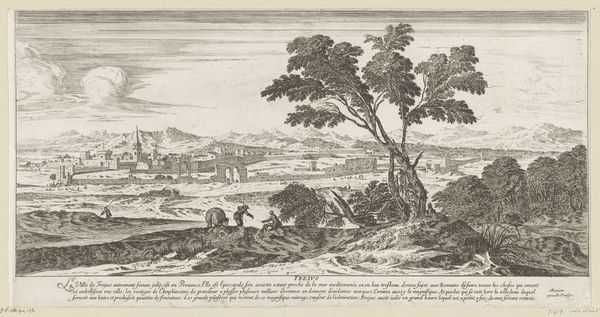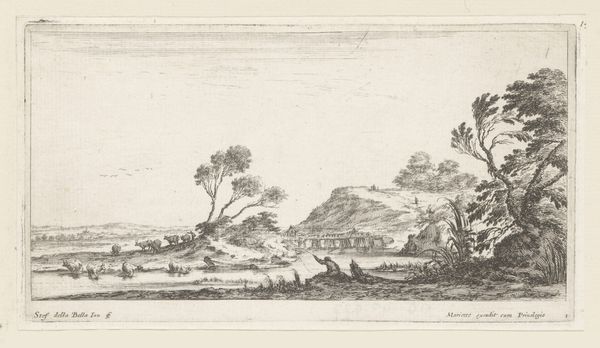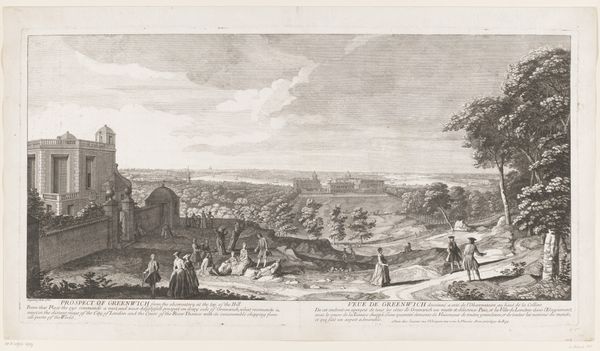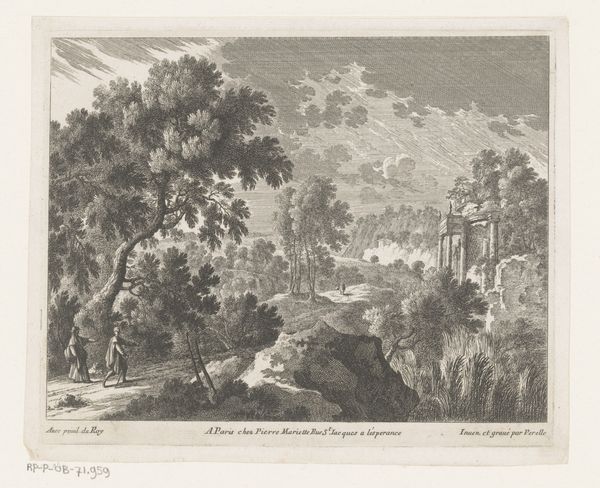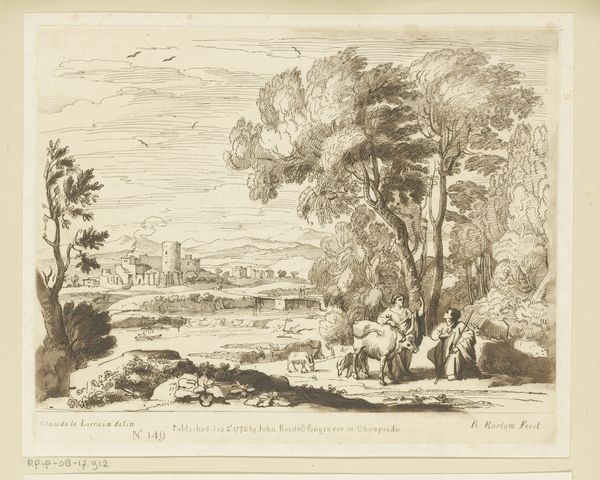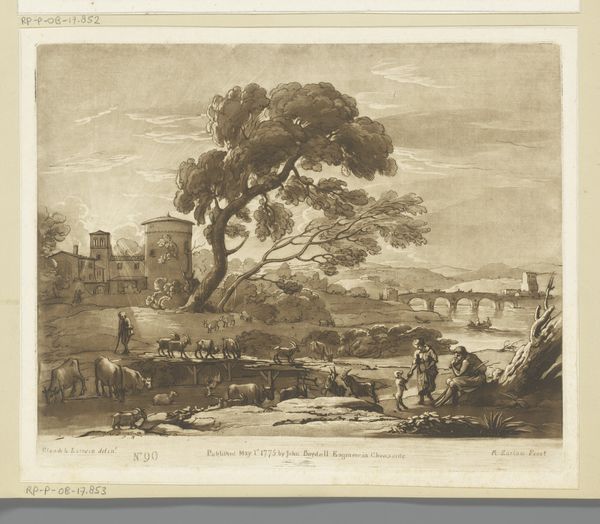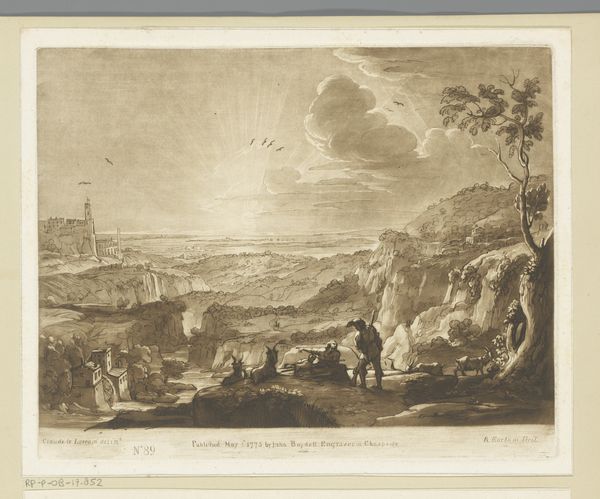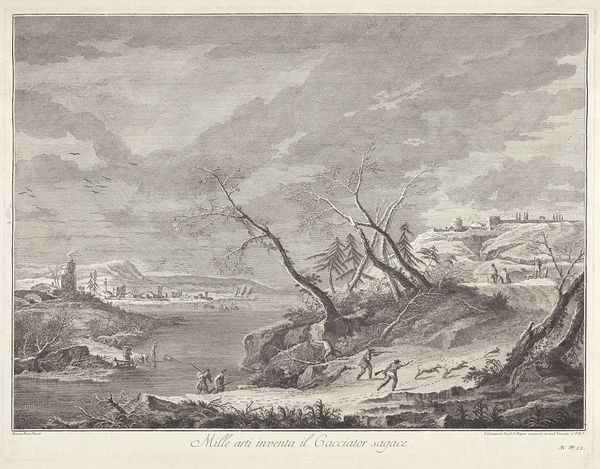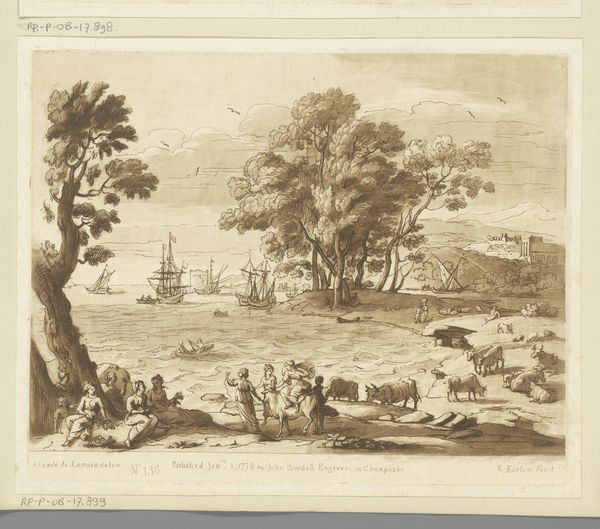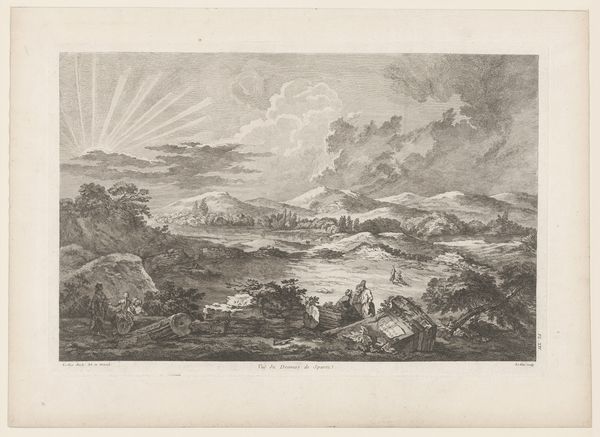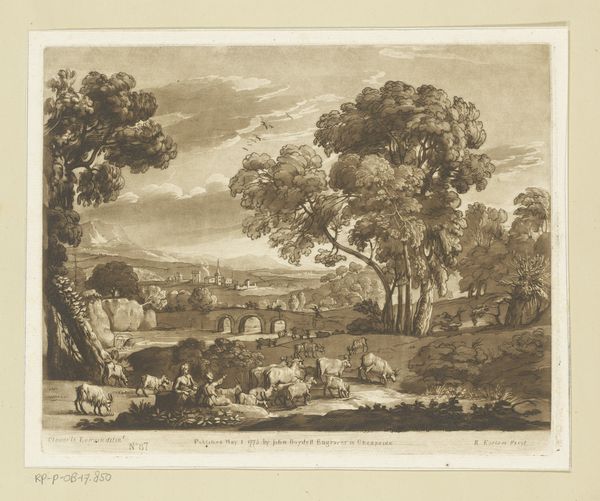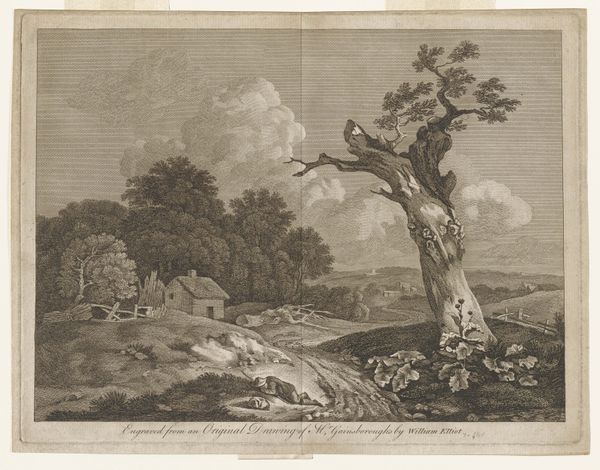
print, etching, engraving
#
baroque
# print
#
etching
#
old engraving style
#
traditional media
#
landscape
#
river
#
figuration
#
line
#
genre-painting
#
engraving
#
realism
Dimensions: height 274 mm, width 361 mm
Copyright: Rijks Museum: Open Domain
Curator: Let's examine "Landschap met rustende figuren," a print made between 1729 and 1769, attributed to Pierre François Beaumont. The detailed etching and engraving offer a complex visual field. Editor: Immediately, I sense a kind of pastoral melancholy. The stark contrast in values—the light sky against the darker foreground—creates a contemplative mood. Curator: The composition utilizes a distinct foreground, middle ground, and background, a structure common in landscape art. The use of line is especially striking, notice the variation in thickness used to create depth and texture. Editor: The figures resting by the river are obviously symbolic, "repose" is "the legitimate fruit of labour," as the French text notes. They embody the idealized harmony between humans and nature so sought after in that period. The distant town could signify civilization, made possible by this very labor. Curator: Precisely, the print shows a consciousness of depicting labor in landscape, something that aligns it with ideas present during its creation period, the subtle shift in perspective with its carefully orchestrated contrasts and textures contributes to the visual interest. Editor: The inclusion of resting animals carries symbolic weight. The dog is fidelity, of course, but their relaxation, juxtaposed with the active worker crossing the bridge, drives home the central message regarding productive rest. Curator: It's interesting that you pinpoint these symbols, indeed this image exists because of certain conventions of structure being followed to convey it, from the tree's placement at the top left of the work, which counterbalances the structure and ensures it is in keeping with a compositional approach. Editor: Agreed. This piece presents a simplified yet powerful message of rest through carefully chosen symbolism, offering insights into 18th-century ideas about labour. Curator: Thank you for highlighting those compelling narratives. Looking deeper into composition offers another interesting lens for the audience.
Comments
No comments
Be the first to comment and join the conversation on the ultimate creative platform.
